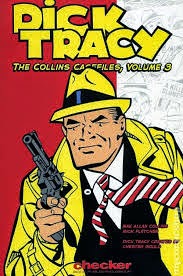 |
| Mount Lofty Station (Stirling), Adelaide Hills |
Grant was a lifelong rail enthusiast, with a broad knowledge of the world’s
locomotives and a talent for the mechanics of model railways. As a child, his only struggle with the hobby was
building landscapes for his model engines to chug through. Today you can buy every conceivable notion
from a franchise chain, but in the 1970s, you had to be creative.
Together we made matchstick buildings, cardboard rivers (painted blue and sprinkled with glitter) and papier-mache mountains. Our landscapes were clad in brown paper – the ‘earth’ – daubed here and there with green paint 'grass.' Ah, brown paper ... everyone had a roll in their homes then. Now nobody does.
His favourite film was, of course, The Railway Children (1970)
The old Hornby catalogues are gold! Long
before websites, before there was cheap offshore bulk printing, one had to
purchase a product catalogue. With
suitable reverence, boys in many countries pored over Hornby’s annual releases,
carefully choosing new engines, carriages or tracks, making sure the gauge was
right, perhaps adding a signal box or level-crossing to the wishlist. If they’d done really well at school, or Dad
was a railfan too, they might even score a station and platform!
Together we made matchstick buildings, cardboard rivers (painted blue and sprinkled with glitter) and papier-mache mountains. Our landscapes were clad in brown paper – the ‘earth’ – daubed here and there with green paint 'grass.' Ah, brown paper ... everyone had a roll in their homes then. Now nobody does.
His favourite film was, of course, The Railway Children (1970)
 | |
| Every boy had a crush on Jenny Agutter |
| A funky year for Hornby with the green paisley eh. And how about the cravat on Dad?! Or perhaps it's a toyshop uncle *ahem* |
As the years wore on, his enthusiasm for all-things-rail never waned. He travelled far to view favourite or historical trains, become ‘that person’ taking photos from odd vantage points, and built a far more sophisticated home railway.
A few months ago, as he neared the terminal, Grant was reassured to know I was prepared to curate his core collection. He never did have a son, and Girl Gunzels (railfans) are almost unheard of. I guess he knew I’d respect the retro vibe of not just the rolling stock, but the hobby itself.
In the real world, there are six significant railway stations where we may one day scatter Grant’s ashes. At the moment, the urn is in a box with his RS613 Steam Freight Set, whose package proclaims “With Smoke!” which I know he’d find wryly amusing.


















